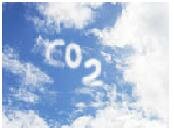What’s happened at Copenhagen?
Tuesday, December 22nd, 2009There was a tremendous build up to this international climate conference. There was lots of anticipation by the public. It was declared to be the ‘most important international gathering of our time’. Peaceful public demonstrations all around the world intensified as the date of the conference approached. People in numerous countries publicly declared that they want change to avoid a global disaster due to greenhouse emissions. They clearly indicated that they’ve had enough of talk and wanted action, now. So did the climate conference live up to the expectations?
The following statement by Yvo de Boer sums up the outcomes succinctly:
”The Copenhagen Accord, which was expected highly to lead to a legally binding treaty, aroused opposition from several developing countries, who said the emission reduction targets were not ambitious enough and refused to adopt it. Yvo de Boer, the Executive Secretary of UN Framework Conventionon Climate Change said at his closing press briefing that the Copenhagen Accord not only failed his hope of achieving a legally binding treaty, but also failed the hope of an agreement for such a treaty. But he still believed that countries should strive for such goals at the next UN climate conference in Mexico in 2010.”
Unfortunately lots of the sceptics predicted this result (and I’m not talking about climate change sceptics either but sceptics who don’t believe that we should place our faith in governments and leaders). Respected climate scientists are urging for immediate cuts to GHG emissions to prevent a more than 2C increase in global temperatures. Well-known international economists are insisting on allocating more funds towards low carbon technologies but again without support from the top people are cautious about investing in the renewable energy market. The fossil fuel market must become non-profitable to drive investments in the low-carbon economy.
Another statement by Monbiot again summarises where we are at: “The longer a comprehensive agreement is delayed, the steeper the emissions cuts will have to be if we are to avoid climate breakdown. Beyond a certain point the scale of the cuts becomes politically, economically and technologically infeasible. That point must already be close”.
So we will have to wait another year to see whether the international leaders can agree on some sort of binding treaty instead of everyone doing their own thing without any scrutiny. In the mean time you don’t have to wait to make a change. Start living a more sustainable lifestyle and support renewable energy and companies that are genuinely trying to make a difference to our planet.
(Ref: http://www.guardian.co.uk/environment/2009/nov/30/stern-monbiot-copenhagen-deal/print)





